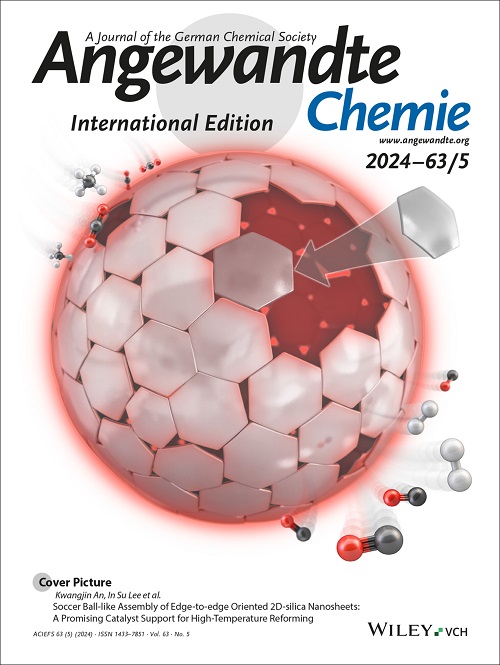General Base‐Free Suzuki‐Miyaura Cross‐Coupling Reaction via Electrophilic Substitution Transmetalation
IF 16.1
1区 化学
Q1 CHEMISTRY, MULTIDISCIPLINARY
引用次数: 0
Abstract
The transition‐metal‐catalyzed Suzuki‐Miyaura cross‐coupling (SMC) reaction of organoboron nucleophiles with aryl (pseudo)halide electrophiles is a reliable method for carbon‐carbon bond formation. This reaction generally requires the use of an exogenous base to promote transmetalation process, which limits the substrate scope of the reaction due to undesired protodeboronation and functional group incompatibilities. Here, we established a base‐free SMC reaction via a conceptually different electrophilic substitution transmetalation (EST). This transformation is applicable to a wide range of base‐sensitive and sterically hindered organoborons. Key to this advance is the formation of a stable cationic palladium(II) or nickel(II) intermediate via experimental and theoretical investigations. In a broader context, this research further expands the synthetic boundary of cross‐coupling chemistry.亲电取代转金属的一般无碱Suzuki - Miyaura交叉偶联反应
过渡金属催化的有机硼亲核试剂与芳基(伪)卤化物亲电试剂的Suzuki - Miyaura交叉偶联(SMC)反应是一种可靠的碳-碳键形成方法。该反应通常需要使用外源碱来促进金属转化过程,由于不期望的原deboronation和官能团不相容,这限制了反应的底物范围。在这里,我们通过一个概念上不同的亲电取代金属转移(EST)建立了一个无碱SMC反应。这种转化适用于广泛的碱敏感和空间阻碍有机硼。这一进展的关键是通过实验和理论研究形成稳定的阳离子钯(II)或镍(II)中间体。在更广泛的背景下,本研究进一步拓展了交叉偶联化学的合成边界。
本文章由计算机程序翻译,如有差异,请以英文原文为准。
求助全文
约1分钟内获得全文
求助全文
来源期刊
CiteScore
26.60
自引率
6.60%
发文量
3549
审稿时长
1.5 months
期刊介绍:
Angewandte Chemie, a journal of the German Chemical Society (GDCh), maintains a leading position among scholarly journals in general chemistry with an impressive Impact Factor of 16.6 (2022 Journal Citation Reports, Clarivate, 2023). Published weekly in a reader-friendly format, it features new articles almost every day. Established in 1887, Angewandte Chemie is a prominent chemistry journal, offering a dynamic blend of Review-type articles, Highlights, Communications, and Research Articles on a weekly basis, making it unique in the field.

 求助内容:
求助内容: 应助结果提醒方式:
应助结果提醒方式:


